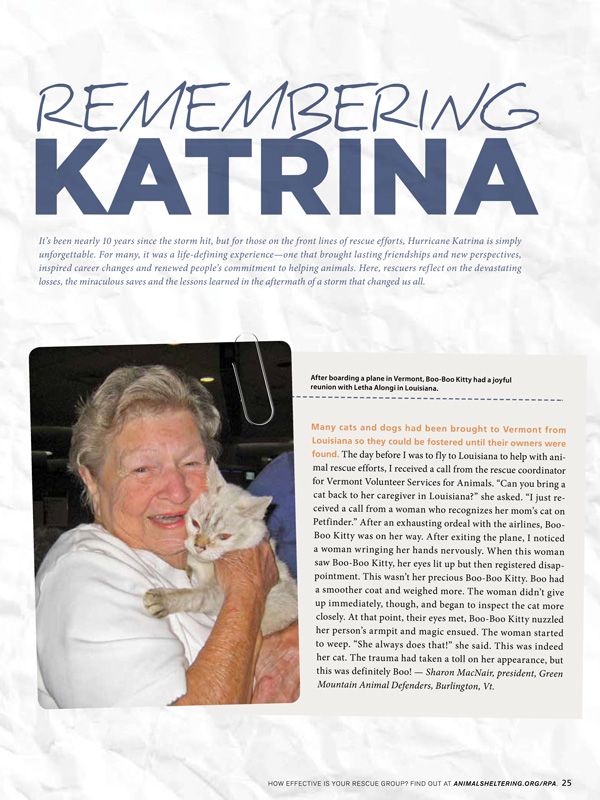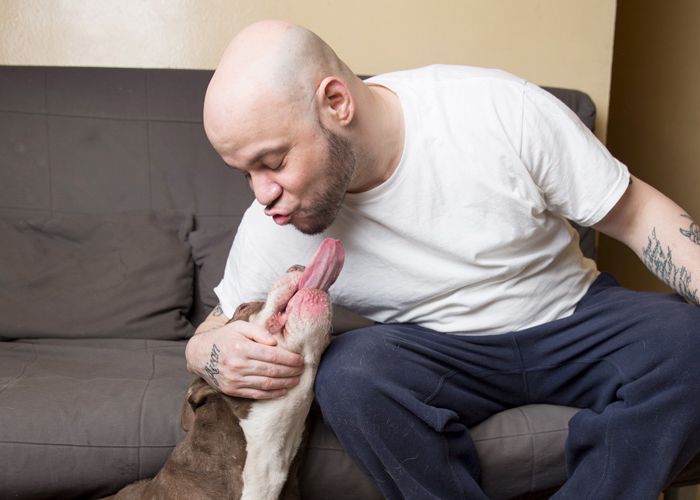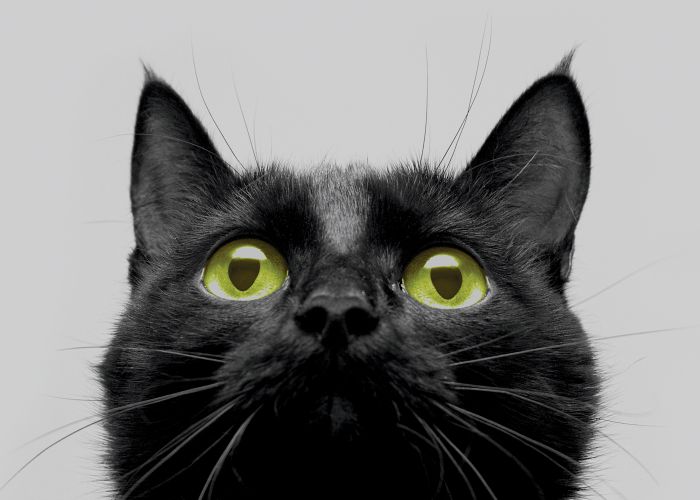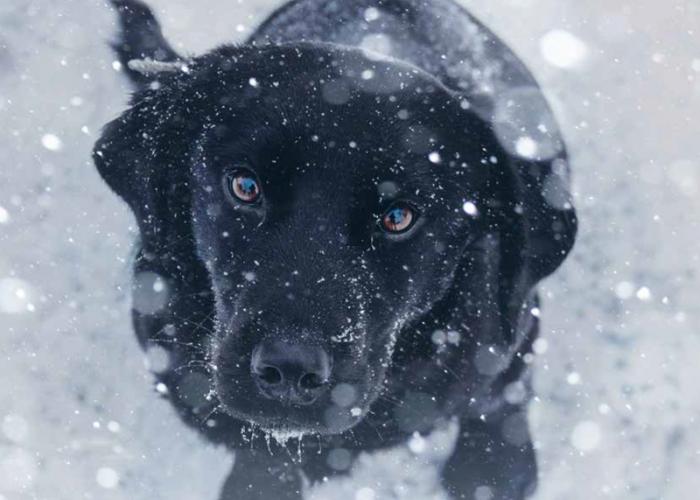The storm that changed us
What we lost; what we learned
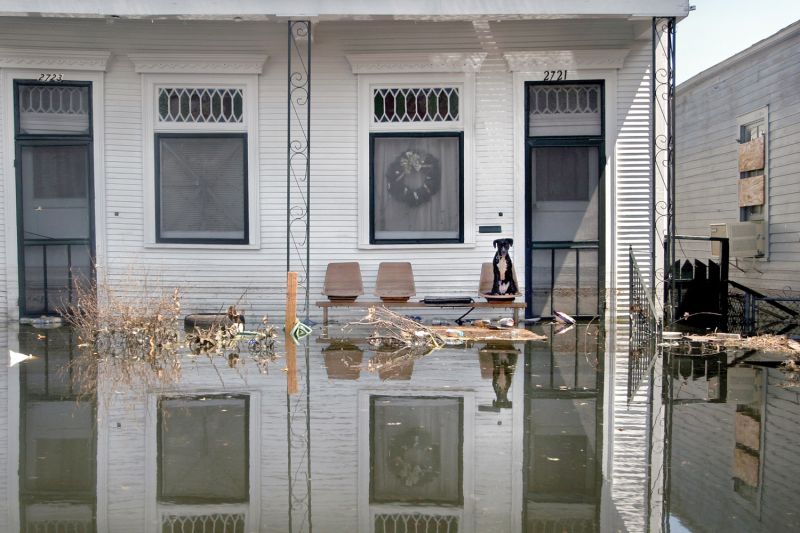
For those of us living outside the Gulf Coast in late summer of 2005, Hurricane Katrina seemed at first like a problem on TV: a swirl of Doppler behind a meteorologist, a distant disturbance that barely crossed the edges of our consciousness. The evening of Aug. 28, many of us had dinner, caught a smidge of the news, took our dogs out for a last evening pee break and said goodnight to the cats.
We woke up to a world that had changed.
The Mississippi Gulf Coast sustained catastrophic damages from the powerful storm surge, which in some places reached more than 10 miles inland. Sweet little beach towns all along the coast were virtually swept away, and when the water receded, it left a tangle of rubble and devastation.
In New Orleans—which initially seemed to have been spared the worst—the full effect of the storm was slower to be seen. But in the hours following the storm, the levees protecting the city from the swollen water began to fail en masse, flooding a huge area with water that, in some places, was 20 feet deep.
The trials for the staff of the Louisiana SPCA had started earlier. The shelter had evacuated its animals to Houston, and as the storm hit, many staff were in Texas doing what much of the country was doing: watching TV. But the news was about their own home.
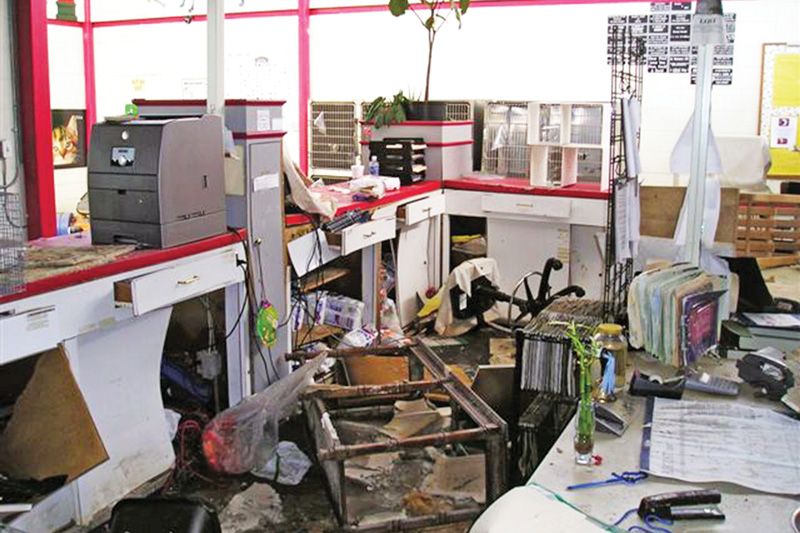
For Laura Maloney, then the executive director of the Louisiana SPCA, it’s one of the most vivid memories: “We were watching the news and saw the stories coming in about the levees breaking. And we knew what that meant.” The organization’s shelter at the time was on Japonica Street in the 9th Ward; the flooding Industrial Canal was practically the shelter’s next-door neighbor.
The next weeks were a chaotic scramble as the Louisiana SPCA got back to the city and started dealing with the aftermath: setting up a temporary shelter at the Lamar-Dixon Expo Center in nearby Gonzales, getting permission to go into the city to retrieve the thousands of pets they were getting called to rescue. Many animals had been left tied to bridges near the city—sites where buses would come to pick up evacuees, many of whom brought their pets only to be told they wouldn’t be allowed onto the transport.Maloney remembers the ground when they went back into New Orleans. “All the mud had caked and dried in the sun, so every step you took, there was a crunch,” she says. “It was almost like you were walking on the moon. And I will never forget the smell. The smell of the mud was so strong. Even today I can smell it.”
And then there was the shelter itself, where the water had risen to 9 feet inside. “Every animal would have been dead if we hadn’t evacuated.”
Maloney and her team dealt with those early days largely alone, but she sent word that more help was needed. Within the week, The HSUS, the ASPCA and many other national groups headed down to assist. Shelters and rescues from across the country and around the world sent teams. Regular citizens with little animal-handling experience were also moved to help; many took vacation time from work and got in their cars or on planes to go volunteer in the disaster zone.
Maloney is still moved remembering the contrast between the quiet of the empty grounds of Lamar-Dixon when the Louisiana SPCA first set up there. Within days, there were hundreds of animals coming in from the city, but there were also lines of cars backed up outside the grounds, full of people who had come to help.
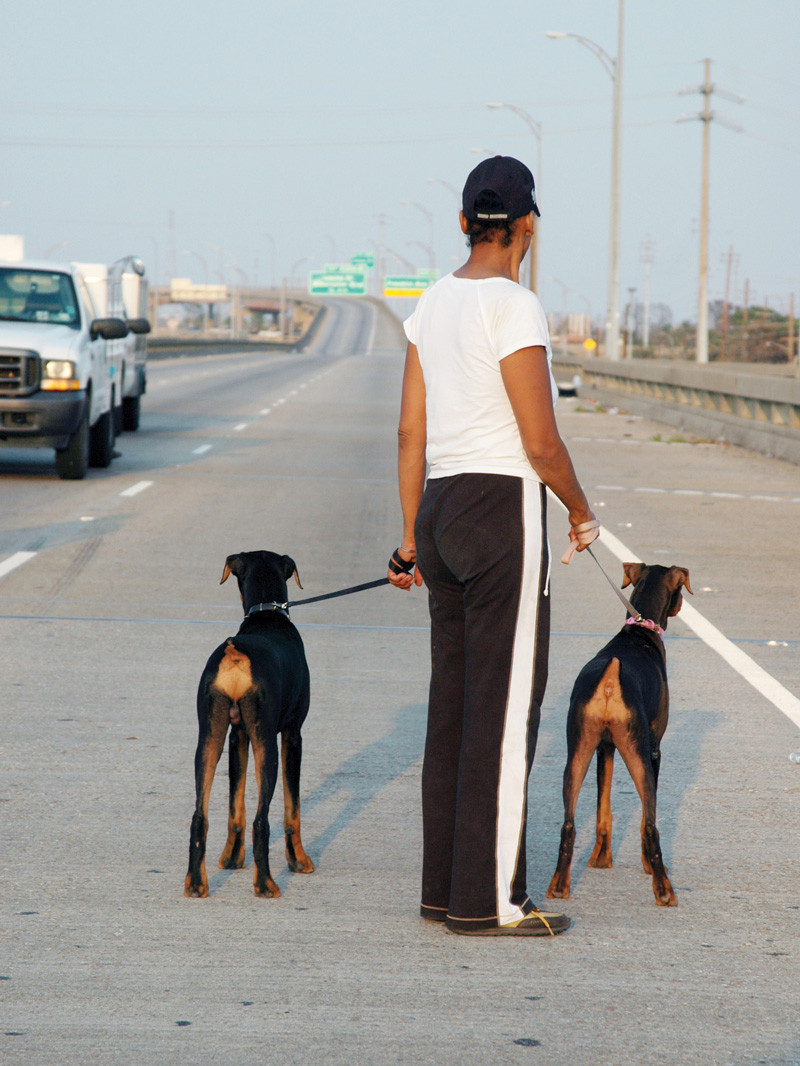
In some cases, volunteers added to the on-site chaos, but the amount of good, lifesaving work these generous souls did every day—unglamorous, filthy work in brutal heat and uncomfortable conditions—is impossible to overstate. In Louisiana and Mississippi, they brought hope and a clear message to the Gulf Coast: You will not face this alone.The mandatory evacuation order for the city of New Orleans was issued at 11 a.m. on Aug. 28. Katrina made landfall less than 24 hours later. In the days leading up to the storm, residents left by the thousands, imagining—who could have imagined otherwise?—that they’d be back in a few days.
Others in New Orleans and along the Gulf Coast stayed. Many had weathered hurricanes before, and figured this would end up being the same: a few downed trees and busted shutters, maybe a little worse.
Still others were held in place by circumstances: nowhere to go, no way to get there. The evacuation centers rarely had any place for pets.
It was a reality brought home to many by an Associated Press story about a little dog named Snowball. As people were finally being evacuated from the wretched conditions at the New Orleans Superdome, AP reporter Mary Foster witnessed a heartbreaking incident. “At the back end of the line, people jammed against police barricades in the rain,” she wrote. “Refugees passed out and had to be lifted hand-over-hand overhead to medics. Pets were not allowed on the bus, and when a police officer confiscated a little boy’s dog, the child cried until he vomited. ‘Snowball, Snowball,’ he cried.”
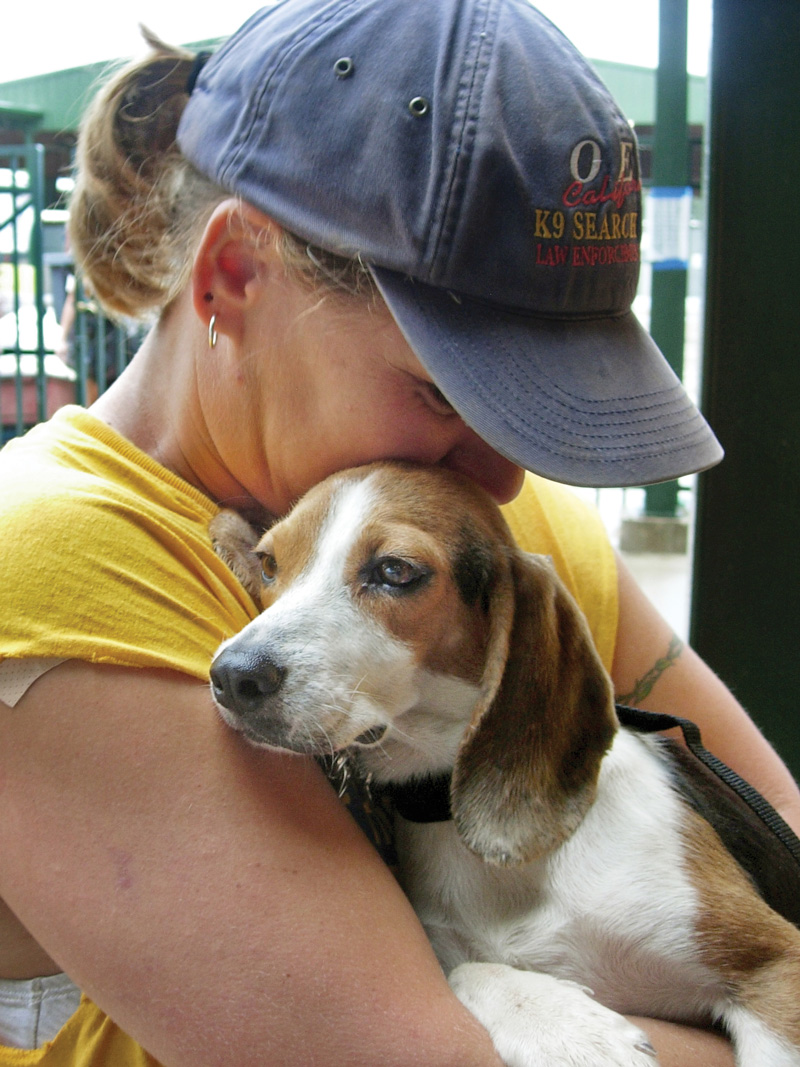
The public was galvanized by the story of Snowball and countless similar tales. Less than a month after Katrina hit, the Pets Evacuation and Transportation Standards (PETS) Act was introduced in Congress. A game-changer for disaster preparation efforts, the PETS Act requires that states seeking Federal Emergency Management Agency assistance include pets in their emergency response plans.In so many ways a fortunate country, the United States is not immune to disasters. Hurricane Katrina happened not quite four years after 9/11, and many of us had learned—or at least been told—the importance of being prepared. We had been frightened into awareness. We had our go-bags ready, our meeting points set.
But all those well-meaning tips from government officials about preparedness—stocking up on food, water and medical supplies, making sure cars are gassed up—fall differently on the ears of those with means than they do on those of people who have few resources at their disposal. What about the elderly woman living on a Social Security check? What about the family that doesn’t have a car to keep gassed up, that lives paycheck to paycheck and commutes by public transport?
What about when those people have pets?
In the aftermath of Katrina, animal welfare activist Karen Dawn wrote an op-ed in the Washington Post that captured the issue many were just beginning to grapple with:
“There is a class issue involved here,” Dawn wrote. “While Marriott hotels welcomed the pets of Katrina evacuees as ‘part of the family,’ people who had to rely on the Red Cross for shelter were forced to abandon that part of the family or attempt to ride out the storm. It cannot be denied that many poor people are dead as a result of ‘no pets’ policies.”
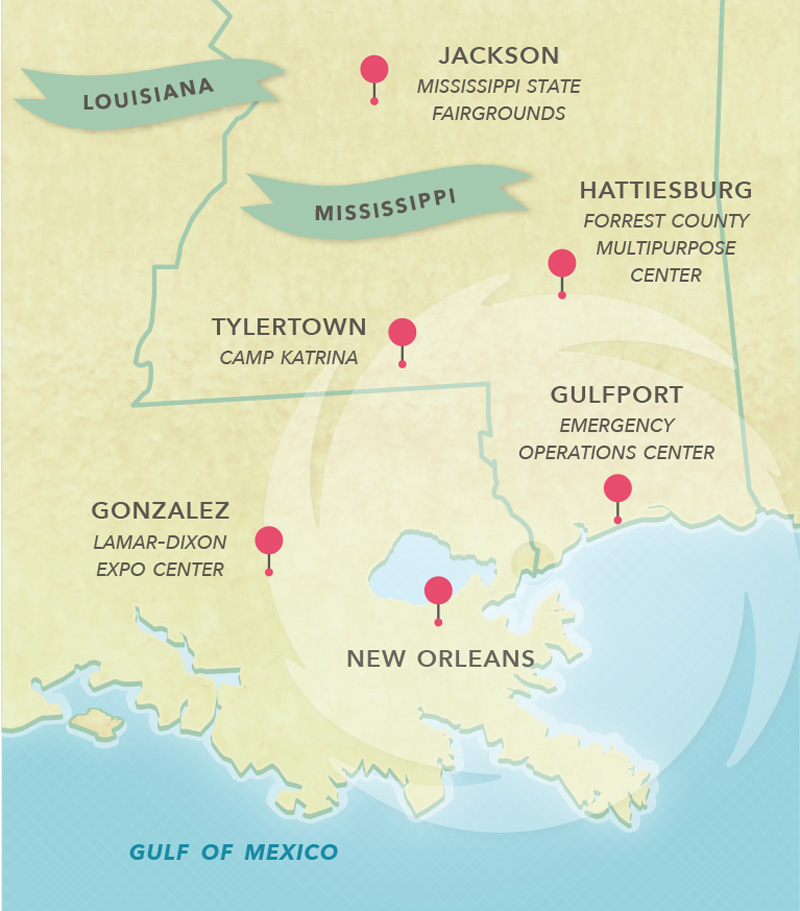
The PETS Act was designed to help address that, but as the months following Katrina unfolded, it became apparent that the animal welfare movement was wrestling with class issues of its own. Some of the compassionate people who had come to the Gulf Coast to help rescue animals found pets in conditions of deprivation or illness that clearly predated the storm. Heartworm was common; few animals rescued were spayed or neutered. As some in the movement made judgments about the people who had—largely through no fault of their own—left their pets behind, legal battles erupted between pet owners who desperately wanted their animals back and rescuers who felt they were undeserving.The compassion the animal welfare movement offered to the pets of Katrina was not always equaled by compassion for the people of the area. It was not always adequate to or comprehending of the realities of poverty. The storm had struck one of the country’s most economically disadvantaged regions. For some, Katrina brought a terrible, dawning awareness of how dangerous it can be to be poor in America, to not have resources or access to the very services that could save the lives of your loved ones. The message animal welfare workers most wanted the government to hear after Katrina—that you cannot help people without helping their pets—needed to be flipped on its head for some of our own: We cannot help pets without helping people.
Even as the legal disputes over Katrina pets got resolved, many groups remained in the Gulf Coast, financing and helping in rebuilding efforts, investing in research and permanent change for the animals and the people of the area. It was out of this aftermath that the HSUS Pets for Life program grew; now embedded in underserved communities around the country, Pets for Life staff and volunteers work with—and find themselves constantly inspired by—people who deeply love their animals but who have, in the past, been left out of the animal welfare movement’s strategy and approach.
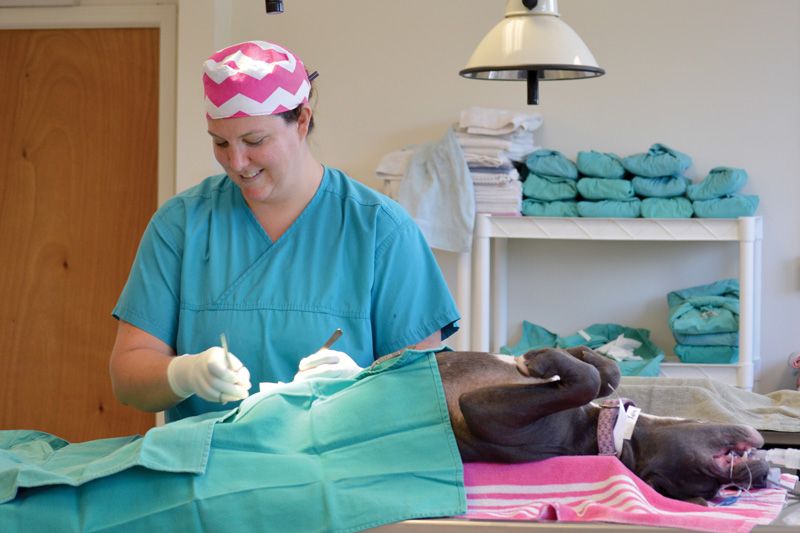
In 2012, when Superstorm Sandy hit the northeast United States, Maloney—working for The HSUS as chief of staff—got to see firsthand how far things had come since the storm that changed her life.After Katrina, the emergency shelter at Lamar-Dixon became overwhelmed with animals, and many pet owners were still unable to return to their homes. As a result, the shelters and rescuers that had come to help in the disaster zone transported thousands of pets to their own facilities around the country—a lifesaving but chaotic effort that left a labyrinth of trails for people seeking to be reunited with their animals.
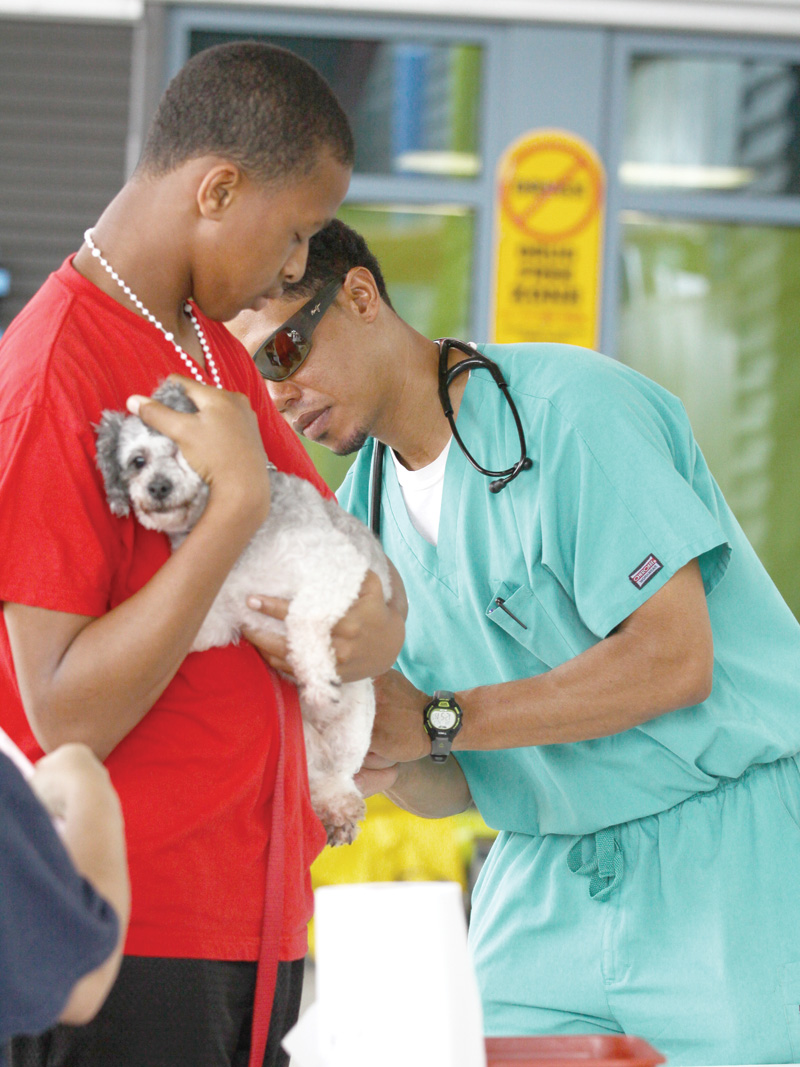
It was not the ideal situation, and it’s one that animal welfare leaders hope will never have to be repeated. “Imagine if all those animals who got sent all over the country during Katrina didn’t have to be,” says Betsy McFarland, vice president of Companion Animals at The HSUS. “Instead of all that chaos, we have pets staying with their families, evacuating together until it’s safe to come home.”It’s not just imagination; it’s happening. The HSUS helped out on the ground in New Jersey and New York in the wake of Superstorm Sandy, operating emergency shelters and deploying more than 140 staff and volunteers. Far more people who had to evacuate took their pets with them this time. And for those who couldn’t immediately return to their homes, a local system was put in place: St. Hubert’s Animal Welfare Center, the Animal Welfare Federation of New Jersey and The HSUS collaborated to set up a program that enabled pet owners to connect with nearby families that could foster the animals until their owners were ready to bring them home.
For Maloney, who helped with the efforts, it was more than a little surreal. Once again, she was watching a storm-related disaster play out on TV. But so much was different now.
“You could see on TV the military and the first responders carrying people’s pets out,” she says. “That’s a stark, amazing difference.”
Document
